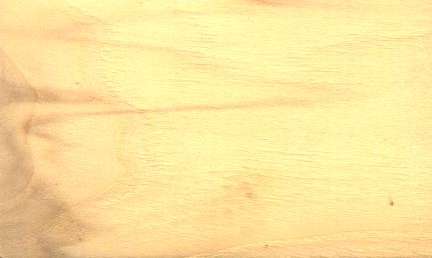 
Balsam poplar (Populus balsamifera)
Family: Salicaeae
Common names: Balm, Balm Of Gilead, Balsam cottonwood, Balsam poplar, California poplar, Cottonwood, Hackmatack, Heartleafbalsam poplar, Poplar, Tacamahac, Tacamahac poplar, Western balsam poplar
Distributed in: Canada, Russia, United States (Eastern Europe, North America)
Distribution overview: The growth range of the species in North America includes Alberta, British Columbia, Lebanon, Manitoba, New Brunswick, Newfoundland, Nova Scotia, Ontario, Prince Edward Island, Quebec, Saskatchewan, Yukon Territory, Alaska, California, Colorado, Georgia, Iowa, Idaho, Massachusetts, Maine, Michigan, Minnesota, Montana, Nebraska, New Hampshire, Nevada, New York, Ohio, North Dakota, North Carolina, Oregon, South Carolina, South Dakota, Delaware, Great Smoky Mountain National Park, Maryland, Connecticut, Illinois, Pennsylvania, Tennessee, Utah, Virginia, Vermont, Washington, Wisconsin, West Virginia, Indiana, and Wyoming. It is aften found in pure stands and prefers moist soils in valleys, mainly stream banks, sandbars, flood plains, and also lower slopes.
Common uses: Baskets, Boxes and crates, Brooders, Casks, Chairs, Chests, Concealed parts (Furniture), Core Stock, Decorative veneer, Desks, Dining-room furniture, Dowell pins, Dowells, Drawer sides, Drum sticks, Excelsior, Figured veneer, Fine furniture, Floor lamps, Food containers, Furniture , Furniture components, Furniture squares or stock, Hatracks, Jewelry box, Kitchen cabinets, Living-room suites, Musical instruments , Office furniture, Organ pipes, Packing cases, Pallets, Piano keys, Pianos , Plain veneer, Poultry coops, Pulp/Paper products, Pulpwood, Radio - stereo - TV cabinets, Rustic furniture, Veneer
Product sources: Although Balsam poplar is abundant, it is rarely marketed alone, but is usually sold in a mixture with other Poplars. The material is readily available from small sawmills at cheap prices, often less than $0.50 per board foot.
Environment profile: Widespread, abundant, and globally secure
Tree size:
The size and shape of Balsam poplar trees are reported to have a good resemblance to the Cottonwoods and Aspens to which they are closely related
Colors: the heart isPurple, Redand the sapwoodSapwood blends into heartwood , Whitish.The grain isWavy, the textureUniformand the lusterLow
Natural durability: Non durable, Very little natural resistance
Odor: Seasoned wood has no odor or taste
Kiln Schedules: T8-F4 (8/4)
Drying Defects: Expect moderate degrade from water pockets., Moderate collapse and honeycombing
Ease of Drying: Dries rapidly
Gluing: Excellent gluing properties
Nailing: Easy to nail
Planing: Easy to plane
Resistance to Impregnation: Moderately resistant
Sanding: Difficult to sand
Screwing: Good screwing properties
;
Staining: Ring-Porous figure becomes distinct after staining
With proper staining, Balsam poplar can be made to resemble Cherry in appearance.
;
- Numerical data Metric
- Numerical data English
- Strength properties
- References
 |
 |
 |
 |
| Item |
Green |
Dry |
Metric |
| Specific Gravity |
0,32 |
0,35 |
|
| Density |
|
|
kg/m3 |
| Bending Strength |
303 |
565 |
kg/cm2 |
| Crushing Strength |
10 |
25 |
kg/cm2 |
| Hardness |
|
|
kg |
| Impact Strength |
45 |
32 |
cm |
| Shearing Strength |
|
54 |
kg/cm2 |
| Stiffness |
65 |
93 |
1000 kg/cm2 |
| Tangential Shrinkage |
7 |
|
% |
| Radial Shrinkage |
3 |
|
% |
| Weight |
721 |
432 |
kg/m3 |
| Maximum Load |
0,35 |
0,56 |
cm-kg/cm3 |
| Toughness |
|
|
cm-kg |
| Static Bending |
179 |
330 |
kg/cm2 |
|
 |  |  |  | | Item | Green | Dry | English | | Bending Strength | 4312 | 8036 | psi | | Crushing Strength | 152 | 363 | psi | | Impact Strength | 18 | 13 | inches | | Maximum Crushing Strength | 1847 | 4449 | psi | | Shearing Strength | | 774 | psi | | Static Bending | 2548 | 4704 | psi | | Stiffness | 936 | 1333 | 1000 psi | | Work to Maximum Load | 5 | 8 | inch-lbs/in3 | | Specific Gravity | 0.32 | 0.35 | | | Weight | 45 | 27 | lbs/ft3 | | Radial Shrinkage | 3 | | % | | Tangential Shrinkage | 7 | | % | | Volumetric Shrinkage | 11 | | % | |
Weight = moderate
Low resistance to denting and marring
Bending strength (MOR) = very low
Bending strength (MOR) = low
Arno, J. 1989. Populus balsamifera - Balsam poplar. In A Guide to Useful Woods of the World. Flynn Jr., J.H., Editor. King Philip Publishing Co., Portland, Maine. 1994. Page 286-288.Boone, R.S., C.J. Kozlik, P.J. Bois and E.M. Wengert. 1988. Dry Kiln Schedules for Commercial Woods: Temperate and Tropical. United States Department of Agriculture, Forest Service, Forest Products Laboratory, General Technical Report FPL-GTR-57, Madison, Wisconsin.Little, E.L.1980.The Audobon Society Field Guide to North American Trees - Western Region.Published by Arthur A. Knopf, New York.Panshin, A.J. and C. deZeeuw. 1980. Textbook of Wood Technology, 4th Edition. McGraw-Hill Series in Forest Resources. McGraw-Hill Book Company, New York.USDA. 1987. Wood Handbook - Wood as an Engineering Material, Forest Service, Agriculture Handbook No. 72, Forest Products Laboratory, Madison, Wisconsin.USDA. 1988. Dry Kiln Operators Manual, Preliminary Copy. Forest Service, Forest Products Laboratory, Madison, Wisconsin.
|









